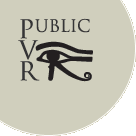CuratorVM
CuratorVM is a free software tool for authoring and maintaining websites. It allows users with only basic knowledge of HTML and webhosting to quickly produce basic sites using the templates and editing tools provided. It also supports more complex encyclopedia-like websites, which use an innovative two-column interface. CuratorVM was originally intended for archaeological sites, museum collections, and the like (hence the name, Curator Virtual Museum) but it is usable for any topic. All CuratorVM websites have a recognizable general format, but the author can modify the look and structure by adjusting the provided templates.
A basic website built with CuratorVM is applicable to small projects, personal websites, and small company websites. A complex site built with CuratorVM can have many named elements (e.g. a street, a temple, a fountain) and many individual pieces of data (e.g. images). It stores these elements in a database, and generates individual web pages with the appropriate HTML. The author assembles them with the provided templates (containing HTML, PHP, and JavaScript code) to produce the actual website. The final website can be hosted on any web server that provides PHP support. For an example of the two-column interface, see
The image, above, shows a website made with CuratorVM that displays information on Southern, a portion of an ancient ruin. The user can display different types of information regarding the area, in each column. When s/he navigates to a different entry on the web site, the same information types are shown in both columns. For example, the reader can juxtapose photos of ruins with reconstructions, or an entry-text with its bibliographic referent. The reader can switch between two-column and single column format, by clicking close/open tab. The menus along the top and bottom are defined by the author.
There are several usage possibilities for use. A single author can use the CuratorVM Runtime, a free application distributed with templates, which contain open-source PHP and Javascript code. The runtime application contains an empty database, to be filled by the author fills with media objects (e.g. images), and supports s user interface.


